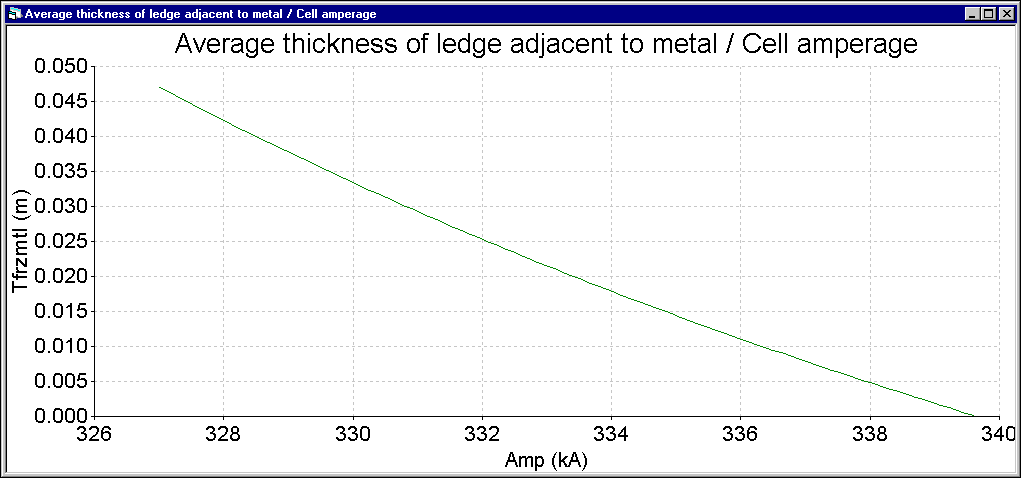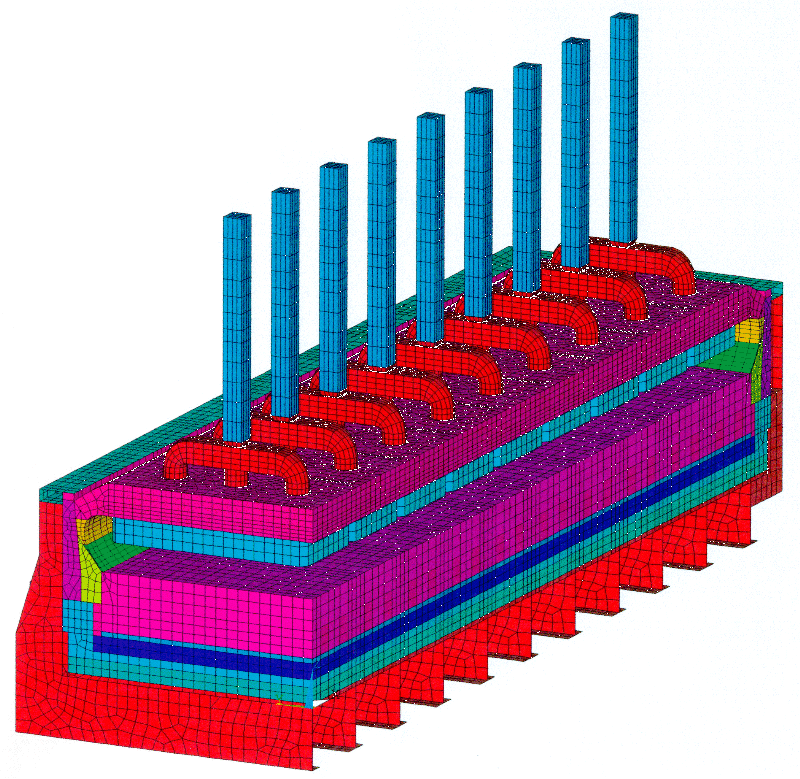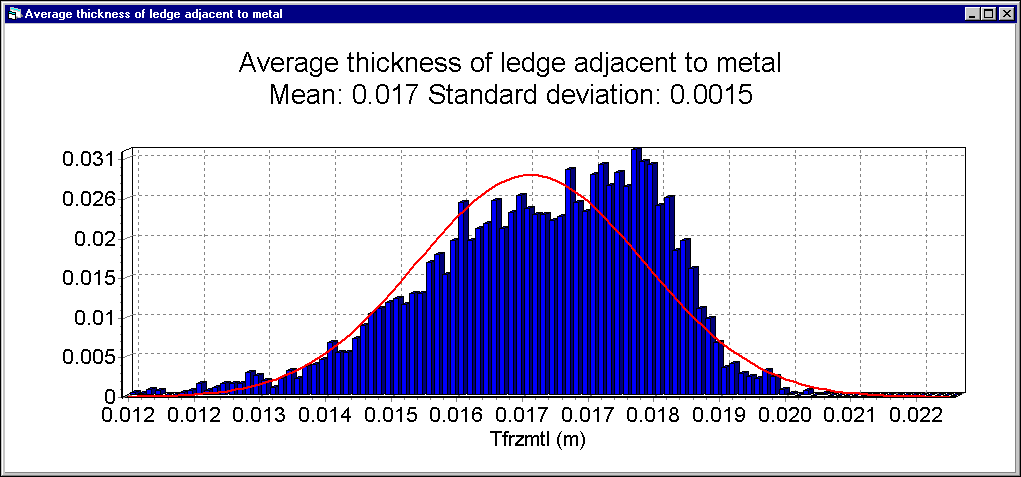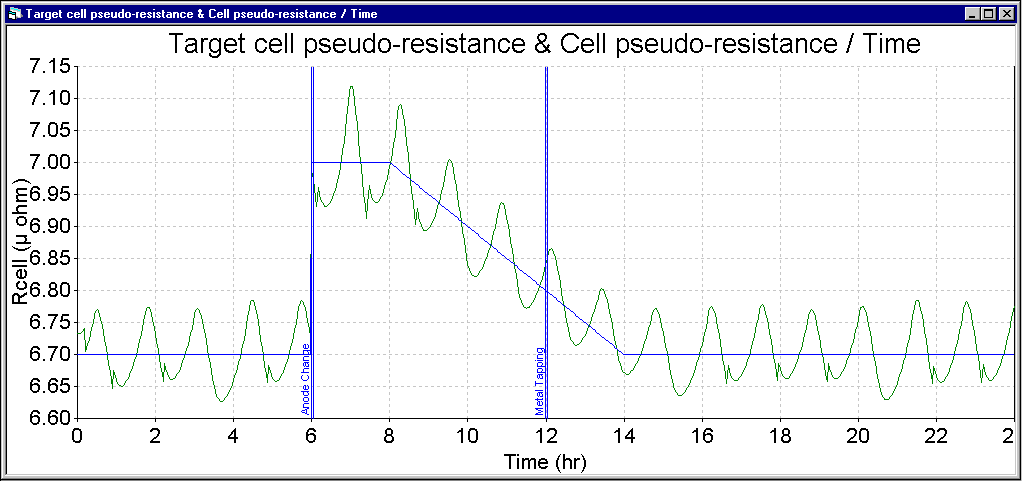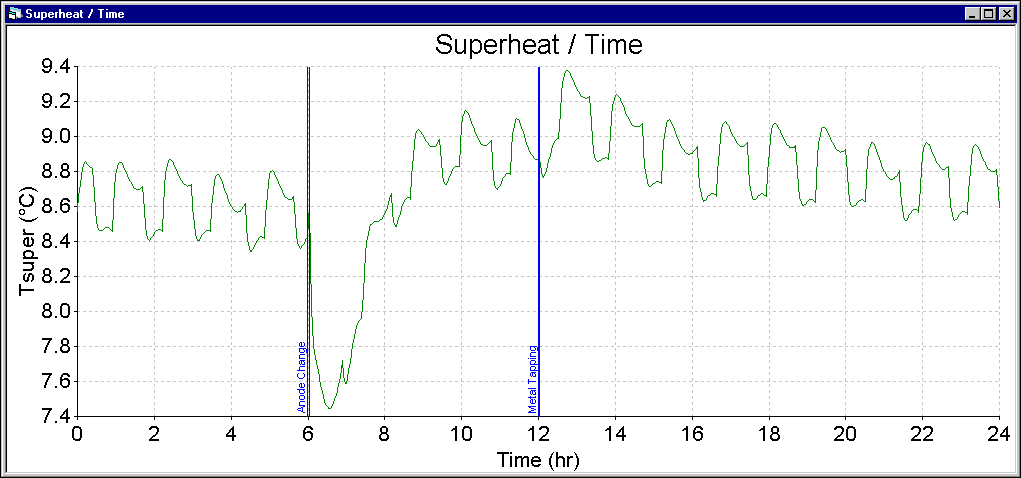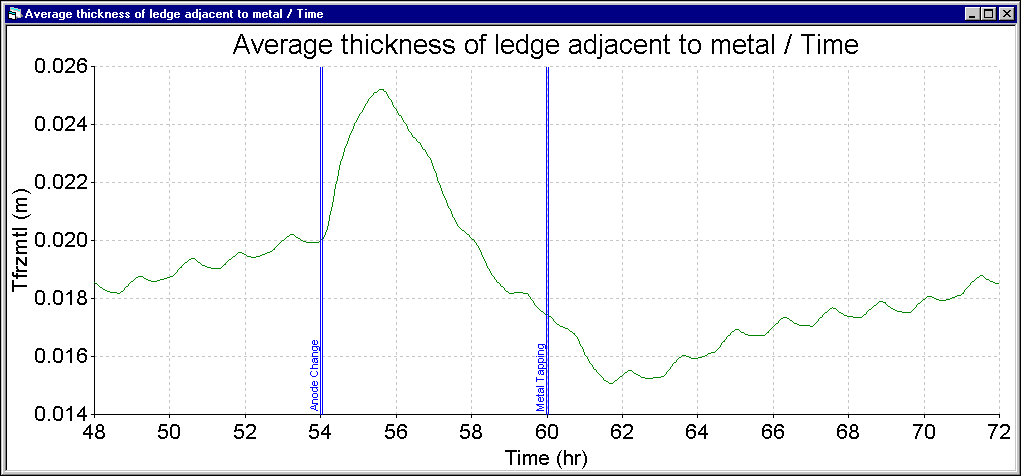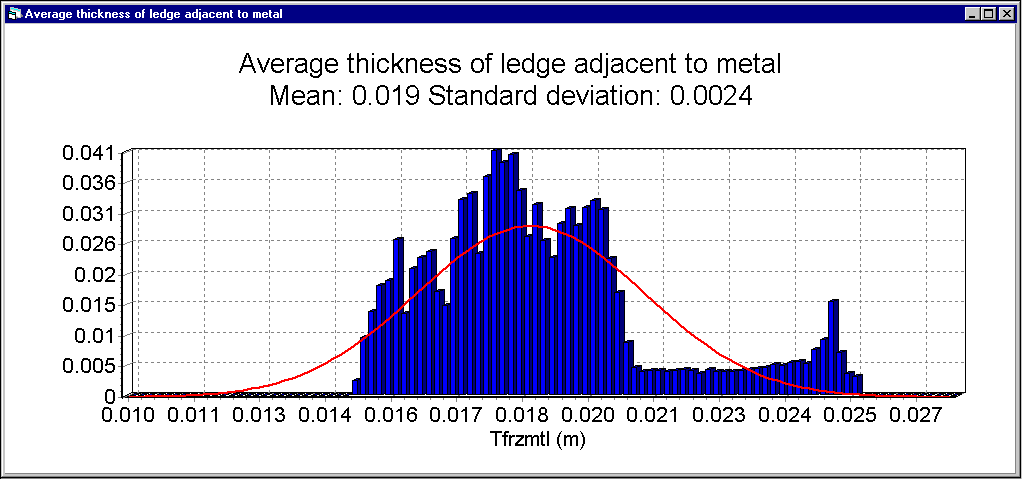Step 2: Reduce the ACD to 4 cm
The impact of reducing the ACD can be easily studied by using the Trend option available in DynaMarc, the lump parameters model. As it can be seen in Figure 1, it is possible to maintain the same thermal balance by exchanging ACD for extra amperage.

Figure 1
In this step, the following cell characteristics have changed:
|
Amperage |
320 kA |
|
ACD |
4 cm |
Step 3: Increase the anode length by 10 cm
Again, by using the lump parameters model, it is possible to study the impact of increasing the anode length, keeping the assumption that the heat balance must remain unchanged (see Figure 2).

Figure 2
In this step, the following cell characteristics have changed:
|
Amperage |
327 kA |
|
Anode length |
1.7 m |
|
ASD |
25 cm |
Step 4: Change of bath chemistry
The aim of this step is to improve the cell current efficiency by decreasing the cell temperature. Unfortunately, by doing so, the bath resistivity increases at the same time. This rise of the bath resistivity more than neutralizes the
beneficial impact of increasing the current efficiency on the heat dissipation. So, unfortunately, the internal heat augments in this step:
|
Excess AlF3 |
13.5 % |
|
Operating temperature |
961.1 ° C |
|
Liquidus superheat |
7.4 ° C |
|
Current efficiency |
95.8 % |
|
Internal heat |
641 kW |
|
Energy consumption |
13.15 kWh/kg |
Step 5: Confirming changes in 2D+ model
So far, only the very fast lump parameters model has been used to carry on steps 2 to 4. Since the next steps of amperage increase will involve changes in the cell lining design, the 2D+ model will now be needed.
In step 5, the 2D+ model was used to confirm the predictions of the lump parameters model. The more accurate 2D+ model confirms the bulk predictions with the following slight changes:
|
Operating temperature |
960.8 ° C |
|
Liquidus superheat |
7.1 ° C |
|
Internal heat |
639 kW |
|
Energy consumption |
13.09 kWh/kg |
The 2D+ model also predicts that the ledge thickness will decrease from 2.87 cm to 2.48 cm on average at metal level and from 7.25 cm to 6.81 cm on average at bath level, jumping from step 1 to step 5.
Step 6: Modifying cathode and side wall blocks
The next obvious move, is to replace the 30% graphitic cathode blocks by 100% graphitized blocks and the 30% graphitic side blocks by silicon carbide side blocks. At the same time, the cathode block length is increased by 20 cm to 3.67 m in order to regain the 6 cm block extension over the anode shadow considering the 10 cm anode length extension performed in step 3.
The maximum side wall thickness is also reduced to 10 cm in order to regain at least a 30 cm ASD. The new cell characteristics after this step are:
|
Cathode block length |
3.67 m |
|
Type of cathode block |
100 % graphitized |
|
Type of side block |
Silicon carbide |
|
Side block thickness |
10 cm + |
|
ASD |
30 cm |
|
Operating temperature |
958.9 ° C |
|
Liquidus superheat |
5.2 ° C |
|
Current efficiency |
96.0 % |
|
Internal heat |
624 kW |
|
Energy consumption |
12.95 kWh/kg |
